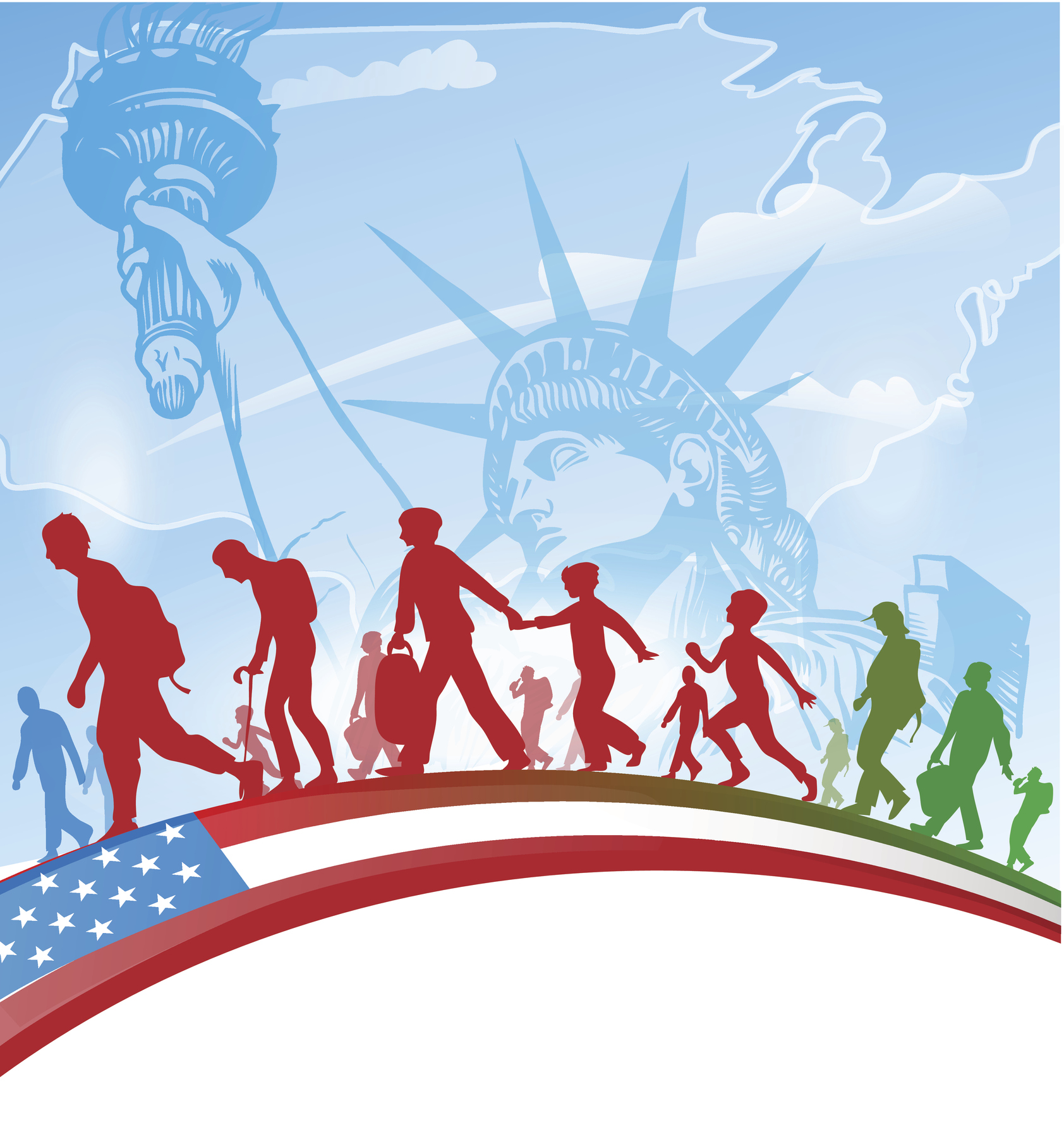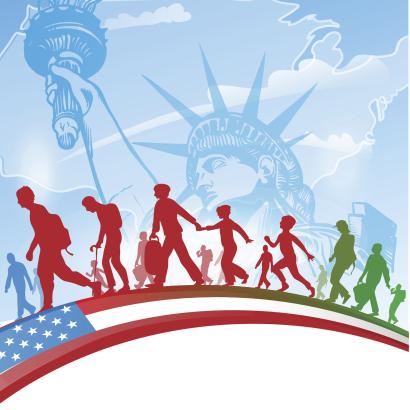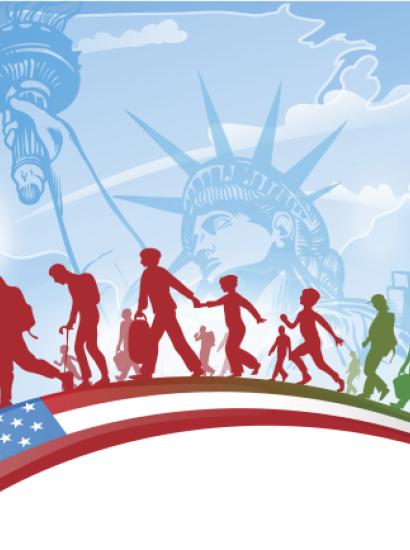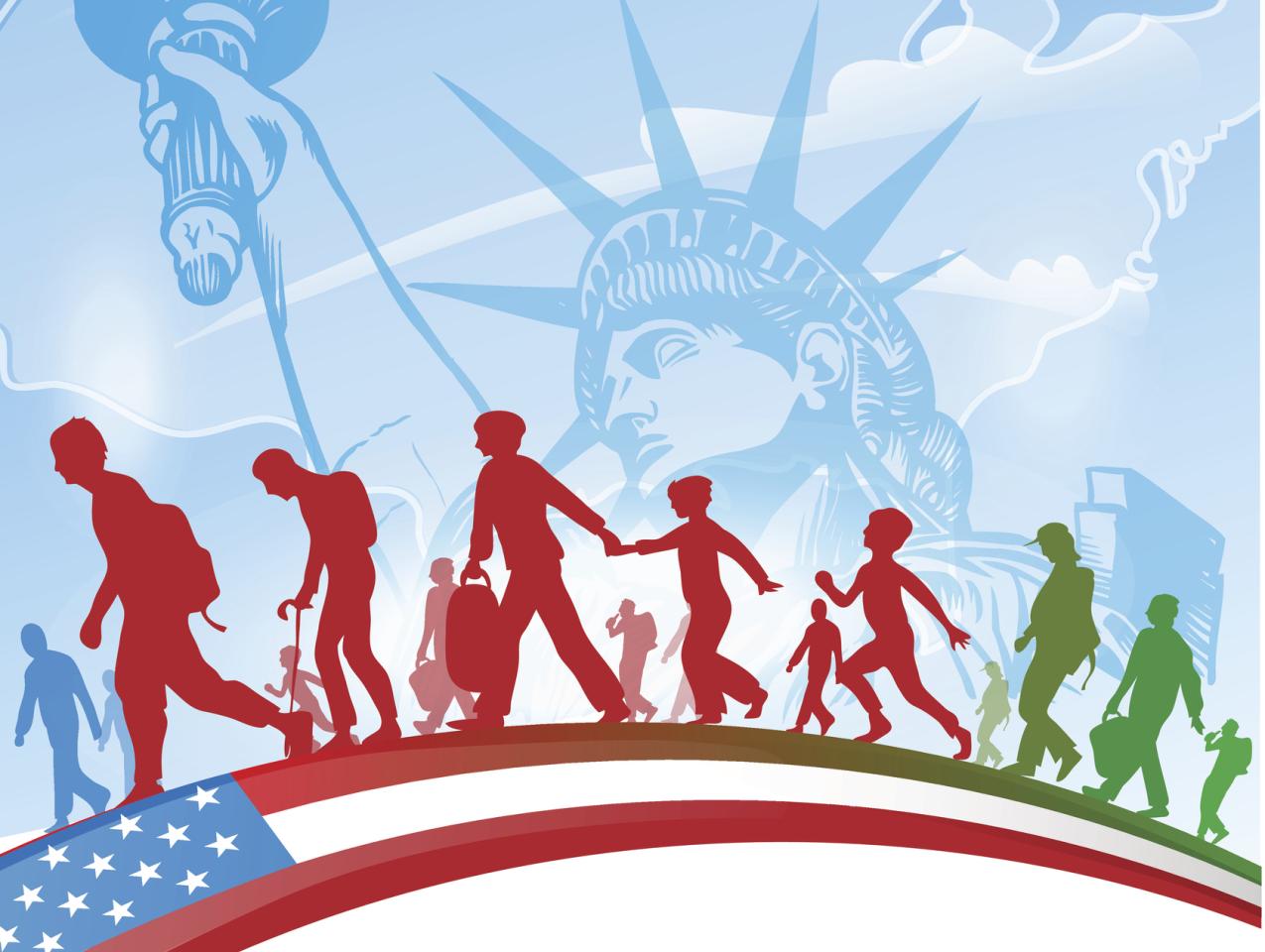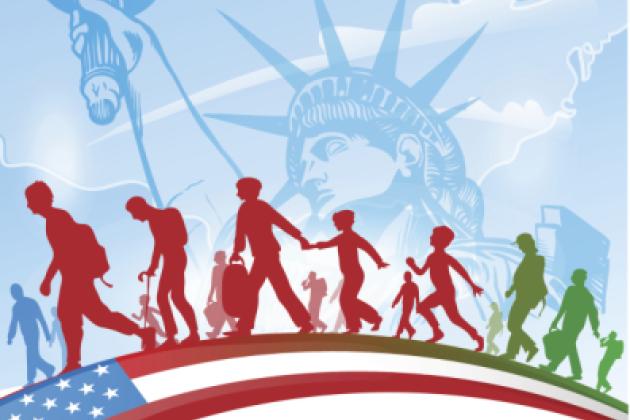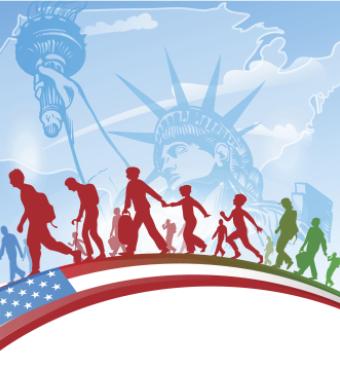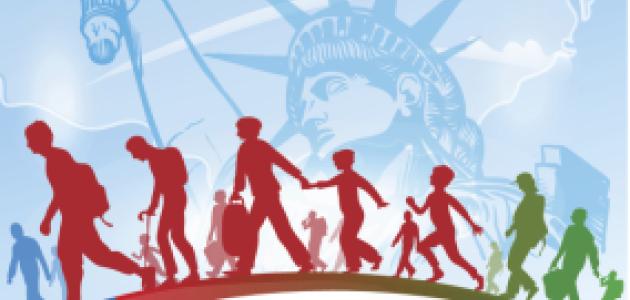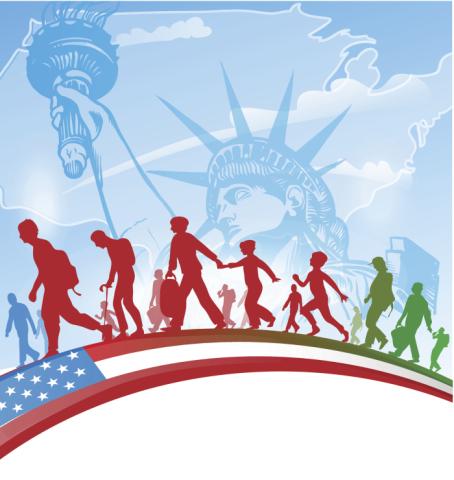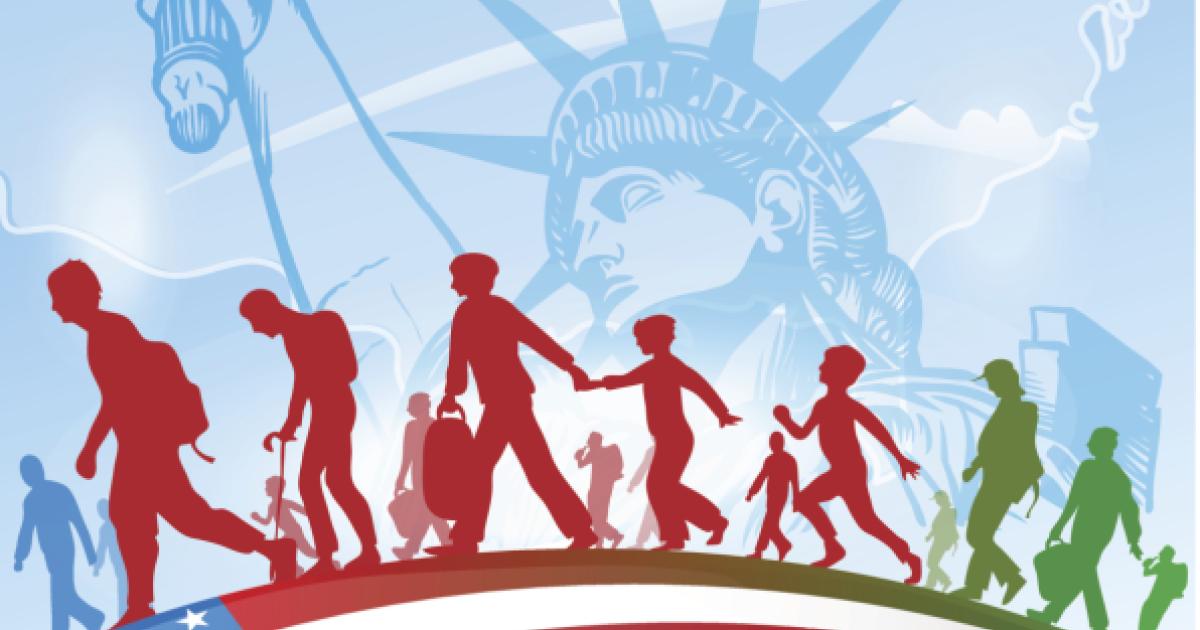- Economics
- History
- Law & Policy
- Politics, Institutions, and Public Opinion
You might expect that I, as an immigrant and as an economist who favors the free movement of labor, would find the idea of open borders to be an obviously good policy. If you also learned that in 1977, the Immigration and Naturalization Service tried to deport me, you might think that I would also be emotionally, and not just intellectually, in favor of open borders. At times I have been.
At other times, though, my enthusiasm for open borders has flagged. When I didn’t know a lot about the facts, I worried that a large number of immigrants would come here for welfare or would, once they became citizens, vote for an even larger amount of government interference than we currently have. I didn’t worry about crime because I knew that immigrants commit crime at a lower rate than non-immigrant Americans. The work of my co-blogger Bryan Caplan and others persuaded me that my fears were largely unjustified. In fact, my new learning motivated me to write a Defining Ideas article titled “The Case for More Immigration.” Now Caplan’s latest book, Open Borders: The Science and Ethics of Immigration, has reduced those fears even more. Caplan considers virtually every argument against open borders and demolishes each with a figurative Howitzer. I do, however, have two criticisms of his book—one of substance, and one of tone in a particular footnote.
Open Borders is not a book in the usual sense. It’s a graphic non-fiction book, an altogether rare thing in publishing. Caplan enlisted cartoonist Zach Weinersmith to draw the pictures for the book.
At this point, some of you might be saying, “Seriously? Caplan tries to make a case for open borders using cartoons? That should disqualify him immediately.” If the book contained only cartoons, you might have a case. But at the end are 19 pages of footnotes that back every claim he makes. And these footnotes reference a 12-page single-space bibliography. As is my wont, when I write a review, I read every footnote. And the evidence he gives for every claim is overwhelming, except in one part that I’ll mention.
Caplan, an economics professor at George Mason University, makes a strong economic case for open borders and a strong philosophical one. He doesn't pull his punches. He does what is now called “steelmanning,” as opposed to “strawmanning,” giving what he regards as the biggest concern we in America should have about open borders. A 2,200-word review such as this can’t do justice to all his arguments and data, so I’ll focus on some important parts of the case that I didn’t discuss in my earlier Defining Ideas article.
Start with the philosophical case, which he makes upfront. A knee-jerk response to the idea that the U.S. government should let immigrants come here is “How is this our problem? Let their own countries take care of them.” This response would be justified, notes Caplan, if the proposal were to force U.S. taxpayers to save the global poor. But that’s not what’s going on. What if a foreigner wants to accept a job offer from a willing employer or rent an apartment from a willing landlord? Then, if the U.S. government forcibly prevents those voluntary transactions, its actions are no different morally from the actions of “Sam” who, noticing “Starving Marvin” on his way to buy food, forcibly prevents him from getting to the store. That’s his philosophical case in a nutshell. Much later in the book, in a chapter titled “All Roads Lead to Open Borders,” Caplan points out that in any political argument, people who want to make a philosophical case must appeal to a philosophical system. Caplan considers seven such systems: utilitarianism, egalitarianism, libertarianism, cost-benefit analysis, meritocracy, Christianity, and Kantianism. He shows that each of them leads to the conclusion that we should have open borders.
One of the most interesting and powerful arguments for open borders is the Kantian one. He starts with Immanuel Kant’s statement that “One should treat every person as an end in himself, never as a means.” In unravelling this statement and considering possible objections, Caplan gets into what might sound like a plausible objection, one that conservatives often state, namely that foreigners who come here are trespassing. But if a foreigner tries to buy food in a private U.S. store, writes Caplan, how is that trespassing? The trespassing claim makes sense, he writes, only if people in the allegedly trespassed against country “collectively own the whole country.” But there is a name for the view that what appears to be private property “rightfully belongs to the society as a whole.” It is a name (and idea) that conservatives detest—socialism.
A large part of the book is Caplan’s stating and evaluating the various economic arguments for and against open borders. The main economic argument in favor is one that Michael Clemens, an economist at the Center for Global Development, has made: namely, that when poor people move from areas where they are badly paid to richer countries like the United States, their wages multiply. A striking graph shows that the “wage multiplier” in moving from poorer countries ranges from a low of 1.5 for people coming from Mexico to a high of over 13 for people coming from Nigeria. This happens immediately and, therefore, the gain cannot be attributed to the skills they gradually gain here.
Many Americans gain, too. We gain as consumers from the new goods and services that are now somewhat less expensive. Four groups that are clear gainers are property owners (from the increased demand for housing); retirees (currently 25 percent of direct-care workers are foreign-born); working moms (from cheaper child care); and construction workers (the increased demand for housing leads to increased supply.) While few people would accuse Caplan of understating the benefits from immigration, I am one of those few. Immigrants start businesses at a rate that is twice that of native-born Americans. Among the main beneficiaries of such immigrant employees, therefore, are American workers. Yet nowhere in his book did I find mention of that fact. It’s possible, of course, that this overstates the benefits to native Americans; think of the Korean dry cleaner that largely employs other family members. Still, the odds are high that most of these employers employ some non-family and non-immigrant workers.
One argument that I have heard against more immigration is that because immigrants to the United States tend to come from much poorer countries, they bring down the average standard of living. Caplan acknowledges that fact but uses a basketball analogy to point out the argument’s weakness. Imagine, he writes, that you’re in a room full of NBA players. The average height of people in the room is 6’7”. Then a class of preschoolers bursts into the room. What happens to the average height of people in the room? It falls dramatically. But what happens to your height or that of the NBA players? Nothing. The analogy isn’t perfect. But its imperfection actually understates the reality of immigration. Whereas both you and the NBA players kept the height you had when the preschoolers entered, the reality is that most Americans, having access to cheaper goods and services from immigrants, will gain.
Most Americans, not all. And Caplan, to his credit, looks boldly at the strongest objection that immigration critic George Borjas, an economics professor at Harvard, has made. Borjas and his Harvard colleague Lawrence Katz reported in 2007 that in the long run increased immigration from Mexico had reduced the wages of native U.S. dropouts by 4.8 percent. That’s a small change. But it also leads to my one substantive criticism. The 4.8 percent number is the result of about 1 million legal immigrants a year and about 11 million illegal immigrants. What would the number look like with the tens of millions of new relatively unskilled immigrants who would likely come here in just a few years? It might be a bigger drop; it might even be an increase as U.S. dropouts find that their English-language skills give them a leg up. We simply don’t know.
Caplan makes the point that U.S. immigration policy shouldn’t be hostage to the small effects on a relatively small number of Americans. But in a later chapter to address people who are not satisfied with allowing even a 4.8 percent drop to the wages of U.S. dropouts, he proposes what he calls a “keyhole solution:” focus on that issue rather than scrapping immigration. Among the policies he proposes are charging immigrants “higher taxes, an admission fee, or both” and then using the proceeds to cut taxes for U.S. natives or provide better services or both. Those ideas make sense, assuming they are constitutional. Indeed, although Caplan doesn't mention this, if the U.S. government doubled the number of immigrants allowed annually to 2 million and charged each a one-time $50,000 admission fee, the $100 billion annually to the feds would make a serious dent in the federal budget deficit.
What would the world look like if somewhere between a few hundred million and a few billion people decided to move to richer countries with open borders? We can’t know, but Caplan mentions a nice real-world experiment that gives us a clue. He points out that in 1976, China’s real GDP, in 2014 dollars, was a measly $504 billion. Then when China moved closer to a market economy, hundreds of millions of Chinese farmers moved to cities to take advantage of the new opportunities generated by that market economy. The result: by 2014, China’s GDP was 20 times as high, at $10 trillion in 2014 dollars. And that’s with a population that was only 47 percent larger. So per capita GDP increased from $538 to $7,333, an increase of 1,263 percent.
One big difference between immigration now and in the 19th century when the United States had something resembling open borders is that we have a very expensive welfare state. Even Milton Friedman, a strong advocate of economic freedom, stated, “You cannot simultaneously have free immigration and a welfare state.” Caplan’s response to Friedman’s objection is one of the strongest parts of book. He admits that immigrants would be disproportionately low-income but points out that a large part of the federal government’s budget is for defense and it doesn’t cost more to defend a larger population in the United States than it costs to defend a smaller one. Taxing immigrants, therefore, lightens the fiscal burden for those of us who are already here.
Furthermore, federal, state, and local governments spend about $1 trillion annually on means-tested programs, which are by definition aimed at lower-income people. But these same governments spend about $2.4 trillion on Social Security, Medicare, and government subsidies to K-12 and college education. The former two are aimed at the elderly, the latter at the young. But he gives data showing that immigrants are much less likely than U.S. natives to be at retirement or school age. For that reason, he notes, immigrants could actually save Social Security from collapsing. He also quotes from a 2016 National Academy of Sciences study of the fiscal effect of immigrants. The NAS looked at taxes paid and benefits received over time and computed the present value, with taxes paid being positive and the cost of benefits received being negative. The bottom line: the long-run effect of existing immigrants is a positive $58,000 per immigrant and of new immigrants is a whopping $259,000. He notes, though, that for immigrants who don’t finish high school—and with open borders, there would be many of them—the fiscal effect is a negative $117,000 per immigrant.
How does Caplan respond to that last inconvenient fact? In two ways. First, he points out that the fiscal impact of U.S. natives is much less positive or more negative than the fiscal impact of comparable immigrants. He asks: should the U.S. government limit the number of babies? His cartoon in which American babies confront Milton Friedman is priceless. Second, he notes that the clear loss is from immigrants who are elderly high school dropouts. Presumably, there wouldn't be that many of them. He also proposes a keyhole solution that would cut the cost of immigration and is, in fact, already in force under the Welfare Reform Act of 1996: make even legal immigrants non-eligible for welfare for a certain length of time. In a footnote, Caplan gives a source where one can find the “gory details” about non-eligibility. This is the tone I object to. Why gory? Caplan’s other writing shows that he’s a strong critic of the welfare state.
Caplan takes seriously the fear that low-skilled immigrants would vote for much more government intervention than we have now. His solutions are to increase the residency requirement for people to become citizens and/or to have them pass a rigorous civics test as a condition of citizenship. I got my green card in 1977 and wasn’t able to vote until I became a U.S. citizen in 1986. If you had told me I could immigrate more easily and never be able to vote, I would have taken that deal in a New York minute.
I know that many Americans are worried about massive immigration. If you’re one of them, I ask you to read Open Borders with an open mind.







